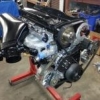Rb25 Coolant Flow / Hose / Swirl Pot / Header Tank Setup
Announcements
-
Similar Content
-
Latest Posts
-
Do you know if he had a plate on it? What use did it see before it broke?
-
Hi. Hoping someone can maybe tell me if the same R34 cable works on R33 coup? Or tell me how I can fix mine. It broke the same way 1" away from the eye. Blessing
-
By TurboTapin · Posted
Robertson was a Canadian inventor, and it absolutely reigns supreme here. 95% of our screws are Roberston. It's literally the only option you can buy off store shelves. What would it have lost out too? I believe it's also very popular in the US. My reference to imperial was pointed to both NPT and BSP. -
No. BSP lost to the cultural/technical imperialism of living next to Trumpistan. Face it, Robertson screws were better and still pretty much lost out to the yank stuff. The Europeans hate the Brits and they don't use NPT. NPT is just as "imperial" as BSP is, being based on those useless inch thingos. Just done differently.
-






Recommended Posts
Create an account or sign in to comment
You need to be a member in order to leave a comment
Create an account
Sign up for a new account in our community. It's easy!
Register a new accountSign in
Already have an account? Sign in here.
Sign In Now